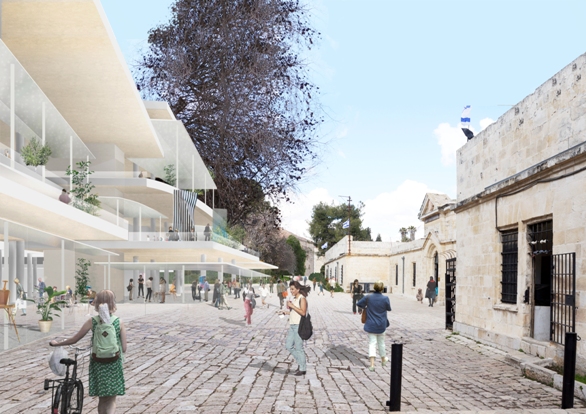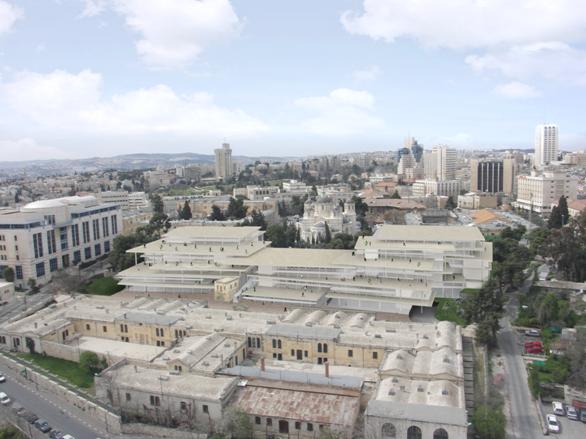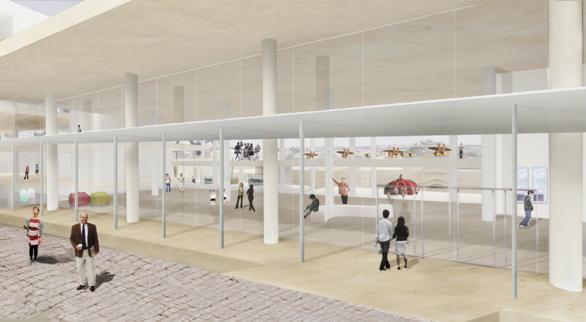
Art and creativity should always have a space at the heart of the Polis, the concept of city and citizenship and independence and collective identity. In this sense, the announcement of plans to restore Bezalel, Israel’s leading academy of art of design, to a new site in the heart of Jerusalem, has both a philosophical and practical soundness. More or less. “I know that this is a loaded term in Israel, but this (move) should be thought of as a return,” Eva Illouz, President of the Academy, observed at the launch of the initiative yesterday. “The city is a natural space for creative activity, with a mixed population, movement, vision. It is the natural home for an academy of art and design, a hub for intellectual activity and a cultural center that reflects the diversity of thought in Israel”
This return will take the form of a 400,000-square foot campus, to be located in Jerusalem’s Russian Compound between the Holy Trinity Cathedral and the Museum of Underground Prisoners. The ambitious program will be be underpinned by a $100m capital campaign, led by a $25m gift from the Jack, Joseph and Morton Mandel Foundation of Cleveland, Ohio. Construction will commence at the end of next year with completion scheduled for 2017.

The project is anchored by a design by Japanese architectural firm SANAA, headed by Kazuyo Sejima and Ryue Nishizawa. SANAA, winners of the Pritzker Prize for design in 2010, have a distinguished history of actualising projects that integrate the creative within the community: New York’s New Museum of Contemporary Art, The Louvre Lens in northern France, the Serpentine Gallery Pavilion in London. Their practice is very much rooted in the reconfiguration of existing space rather than radical re-assessment. This sensitivity no doubt stood them in good stead during the international competition for the project, which they won in collaboration with Israeli firm Nir-Kutz Architects. This is Jerusalem, after all.
Still, the lineal design – embracing Bezalel’s desire to do away with the increasingly artificial divide between the school’s eight departments – nonetheless has an eye-catching sensibility. Comprising of stacked horizontal slabs aligned with the site’s topography, the design proposes to create a series of central multi-level spaces for interaction between faculty and students. A central courtyard, shaped around the Holy Trinity Cathedral, integrates smoothly with the existing landscape, and elegant sweeping terraces present panoramic views. Most distinctive, at least in relation to surrounding buildings, is the predominantly glass carapace. As Sejima explained during the presentation, this is intended as a statement of openness on the part of Bezalel: both a distinct visual identity in a city dominated by stone and a transparency intended to attract and engage with the local community.

Will these statements of intent be enough to win over a city rooted in tradition, even conservatism? Illouz – not incidentally, a sociologist by training with a particular interest in the intersections between emotion, culture and identity – observed that it is possible to respect the physical context of Jerusalem without necessarily being imitative. I agree. The glass is a break – one that won’t get broken, one hopes – from the imposing physicality of the ubiquitous white Jerusalem Stone. Despite this, the building complements rather than contrasts, respecting the topography and morphology of the city.
That aside, the design is a bold statement of intent. The purpose of art is to guide us, the public, along the pathways of reflection and self-actualisation. It is an intent best served by being a part of the conversation but yet apart, contributing to but independent of the prevailing social context. SANAA’s proposal for the new Bezalel Academy seems to strike the right aesthetic notes.





